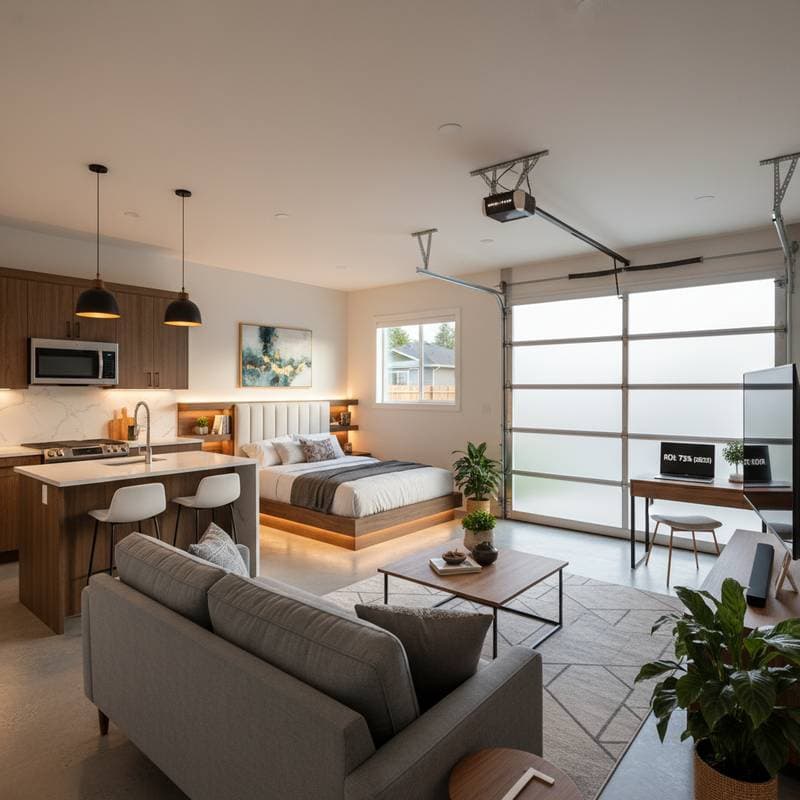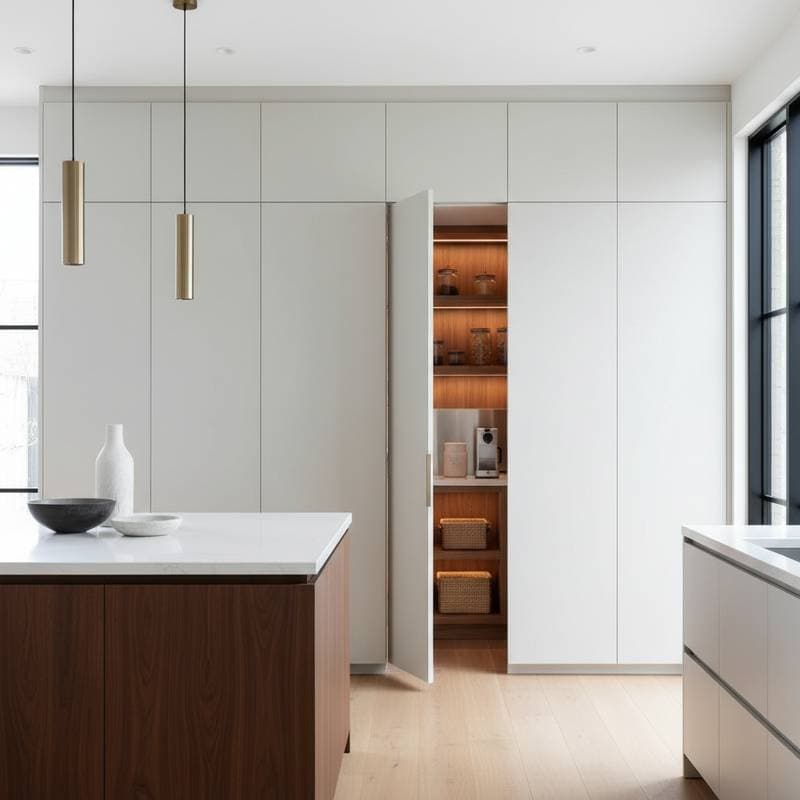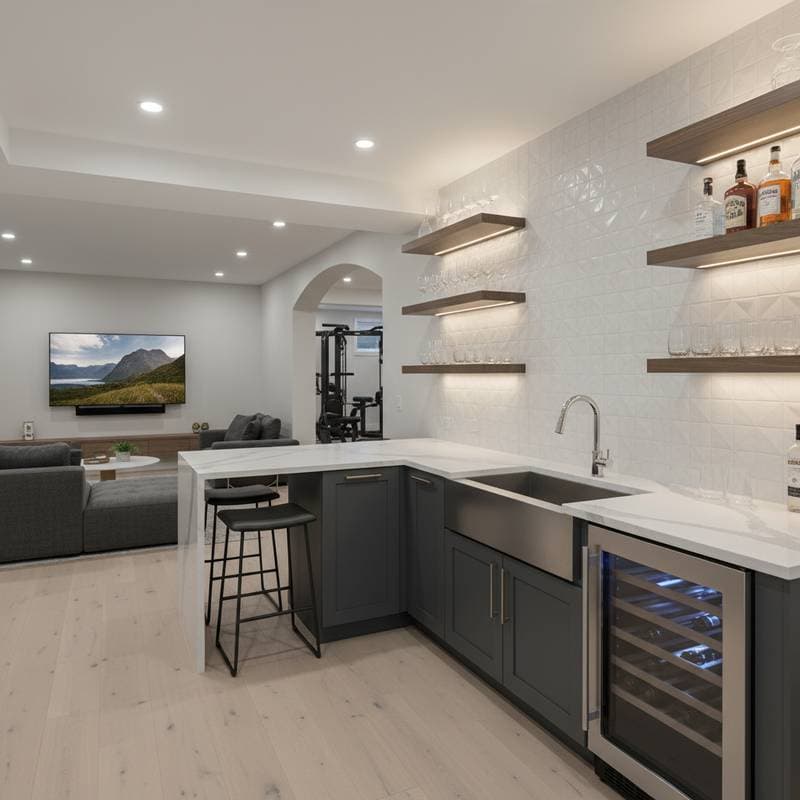Why Garage-to-Studio Conversions Deliver 73% ROI in 2025
Garage-to-studio conversions stand out as one of the most effective home improvement projects for 2025, offering an average return on investment of 73 percent. These transformations repurpose underutilized garage space into functional studios, which can serve as rental units, guest quarters, or home offices. With total project costs typically ranging from $38,000 to $65,000, the investment enhances property value while addressing contemporary housing demands such as flexible living arrangements and income generation.
The appeal lies in the project's ability to add square footage without altering the home's exterior footprint. Homeowners benefit from increased equity, potential rental income averaging $800 to $1,500 monthly in urban markets, and improved marketability. Professional assessments confirm that well-executed conversions recoup costs through higher resale prices, often adding $50,000 or more to a property's worth.
Key Cost Components
Several factors influence the overall expense of a garage conversion, depending on the garage's current state and the desired features. Understanding these elements allows for precise budgeting and avoids unexpected expenses.
- Structural integrity: A stable foundation and framing reduce preparation costs by $5,000 to $10,000. Repairs for issues like cracks, rot, or uneven slabs can increase expenses significantly, sometimes requiring professional engineering evaluations.
- Utility installations: Extending plumbing, electrical, and possibly gas lines from the main house costs $4,000 to $8,000. For heating and cooling, mini-split systems provide efficient solutions but may add $2,000 if gas connections are involved.
- Insulation and weatherproofing: Investments in spray foam insulation, vapor barriers, and foundation sealing range from $2,000 to $4,000. These measures ensure energy efficiency, prevent mold growth, and maintain comfortable indoor temperatures year-round.
- Windows and entryways: Replacing the garage door with insulated walls, energy-efficient windows, or French doors incurs $3,000 to $6,000. Strategic placement maximizes natural light, improves ventilation, and elevates aesthetic appeal for better resale.
- Permits and professional design: Residential conversion permits, along with architectural fees, total $2,000 to $4,500 in most jurisdictions. Early consultation with local building departments clarifies requirements and streamlines approvals.
- Interior detailing: Materials for flooring, drywall, painting, and trim average $6 to $10 per square foot. Selecting durable, low-maintenance options like luxury vinyl plank flooring enhances longevity and visual harmony with the home.
- Additional amenities: Incorporating a kitchenette or compact bathroom adds $12,000 to $25,000, depending on complexity. These features significantly boost rental potential and overall utility.
Allocate an additional 10 to 15 percent of the budget for contingencies, particularly in homes over 20 years old where drainage improvements or slab adjustments prove necessary. Detailed site inspections prior to starting mitigate these risks.
DIY Options Versus Professional Services
Certain aspects of a garage conversion lend themselves to do-it-yourself efforts, provided participants possess basic skills and tools. However, complex elements demand expert involvement to ensure safety, compliance, and durability.
Suitable DIY Tasks
- Painting interiors, installing trim, and laying flooring with click-lock systems.
- Assembling prefabricated cabinets and mounting simple fixtures like lighting or shelves.
- Performing exterior landscaping adjustments, such as planting privacy hedges or adding pathway lighting.
When to Engage Professionals
- For any modifications to load-bearing walls or structural framing.
- When installing new plumbing lines, electrical wiring, or HVAC systems to meet code standards.
- If the concrete slab requires leveling with self-leveling compounds or if bathroom additions involve waterproofing.
- Throughout the permitting and inspection process to navigate local regulations effectively.
Essential Safety Considerations
Professionals and DIY enthusiasts alike must prioritize precautions. Disconnect power at the main breaker before handling electrical components. Test for hazardous materials like asbestos in insulation or lead in older paint prior to disturbance. Wear respirators, gloves, and eye protection when working with insulation, sealants, or concrete dust.
Opting for DIY on finishing tasks can reduce costs by 10 to 20 percent, yet mistakes in critical areas like wiring or moisture barriers often lead to costly corrections. Licensed contractors guarantee adherence to building codes, preserving the project's value and insurability for future sales.
Ongoing Maintenance and Warranty Essentials
Sustaining the studio's performance requires routine upkeep, which preserves both functionality and investment returns.
Routine Maintenance Practices
- Conduct annual inspections of the foundation slab for cracks, shifts, or water accumulation, addressing issues promptly with sealants or professional repairs.
- Refresh exterior paint or siding seals every five to seven years to block moisture and extend material life.
- Service mini-split HVAC units by cleaning filters every three months and scheduling professional tune-ups annually.
- Install and replace smoke and carbon monoxide detectors every five years, ensuring battery backups and hardwired connections where required.
Understanding Warranties
Most HVAC installations carry coverage for five to 10 years, including parts and labor for defects. Windows and doors often feature 20-year guarantees, contingent on regular maintenance like caulking around frames. Exterior integrations, such as roofing extensions, provide 10- to 25-year protections based on material quality.
Retain all warranty documents, receipts, and inspection reports. This paperwork not only aids in claims but also reassures potential buyers of the conversion's quality and regulatory compliance.
Navigating Regional Variations and Market Dynamics
Return on investment varies by location, influenced by housing density, zoning laws, and economic trends.
In densely populated urban settings, conversions yield the highest returns due to scarce space and robust rental markets, where studios command premium rates. Suburban neighborhoods experience solid gains, particularly where policies favor accessory dwelling units for aging-in-place or family support. Rural properties may realize more modest ROI, though conversions excel for personal use like home-based businesses or extended family lodging.
Local regulations play a pivotal role. Certain areas mandate independent utility metering, dedicated parking spaces, or impact fees. Consult zoning boards early to verify allowances for conversions, avoiding fines or redesigns after initial work begins.
Steps to Execute Your Conversion Successfully
Embarking on a garage-to-studio project demands methodical planning to achieve optimal results.
- Evaluate the garage's structural suitability and zoning compliance, including setback distances and foundation stability through a professional survey.
- Develop a detailed design blueprint, incorporating layout sketches and material selections to facilitate accurate contractor bids.
- Secure permits at the outset by submitting comprehensive plans, which prevents delays in material procurement and construction timelines.
- Select contractors with proven expertise in accessory dwelling units or similar conversions, verifying licenses and references.
- Establish a comprehensive budget that accounts for potential overruns in areas like foundation reinforcement or enhanced insulation.
- Monitor project advancement through weekly check-ins, adjusting schedules and resources to maintain efficiency and control expenditures.
This approach transforms a simple garage into a versatile asset that enhances daily living, generates revenue, and fortifies long-term financial security. Strategic investments in quality materials and expert oversight ensure the studio integrates seamlessly, delivering enduring value to your property.











